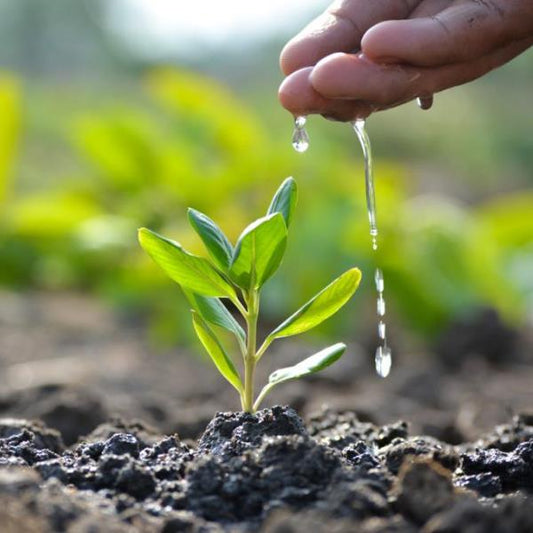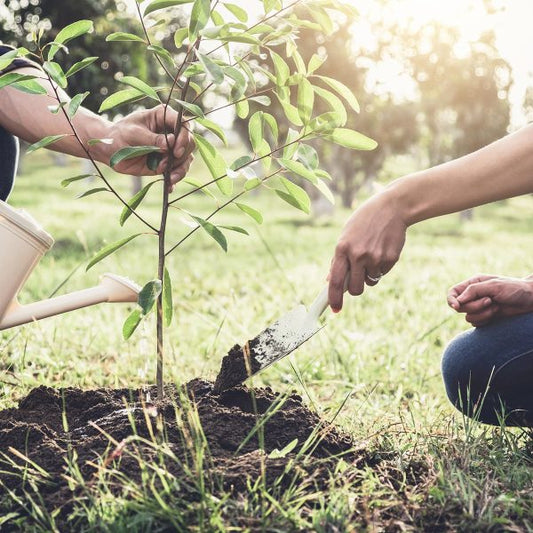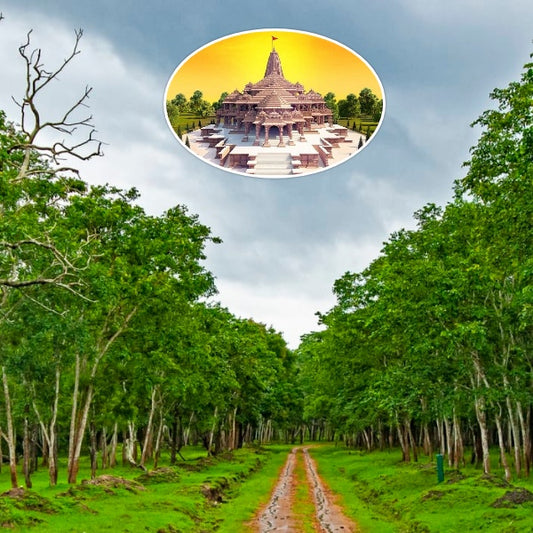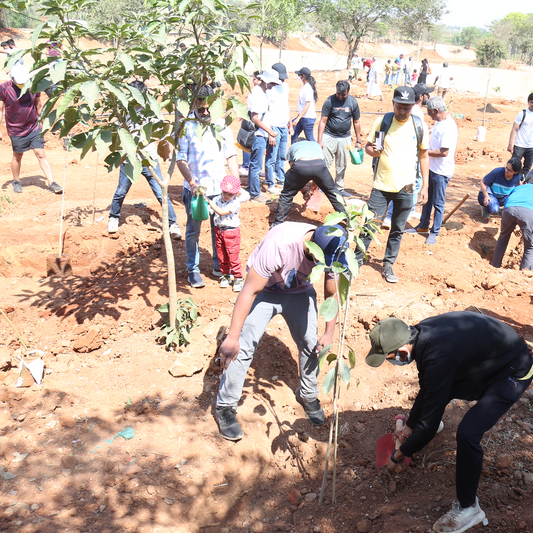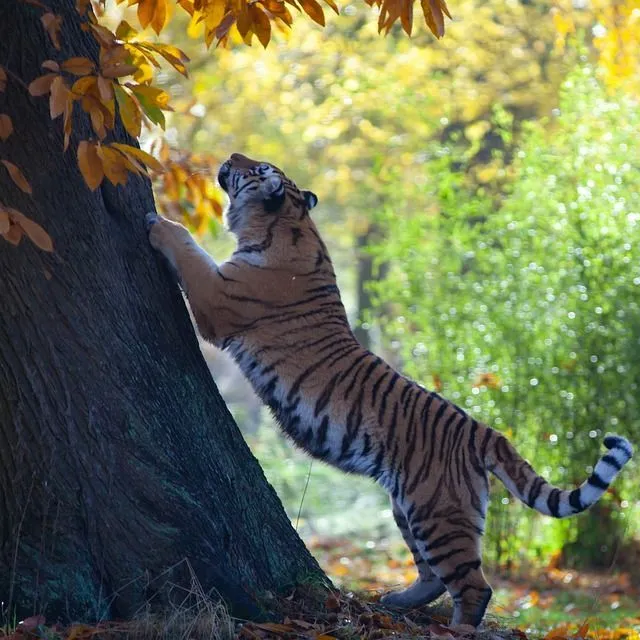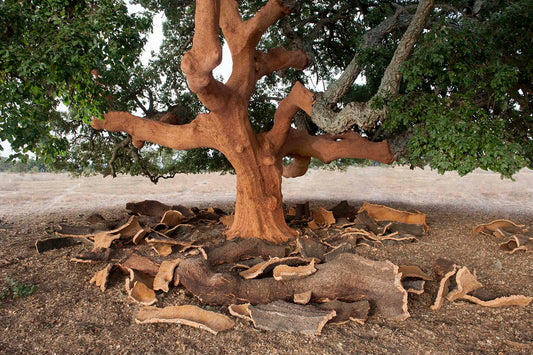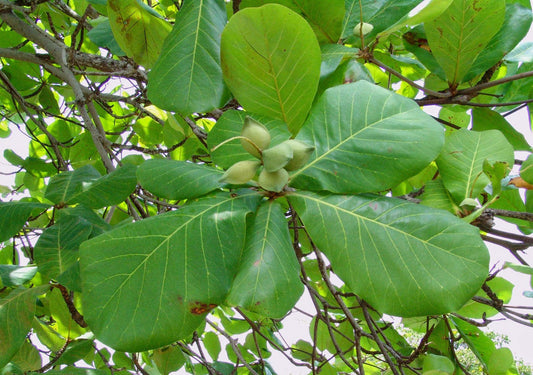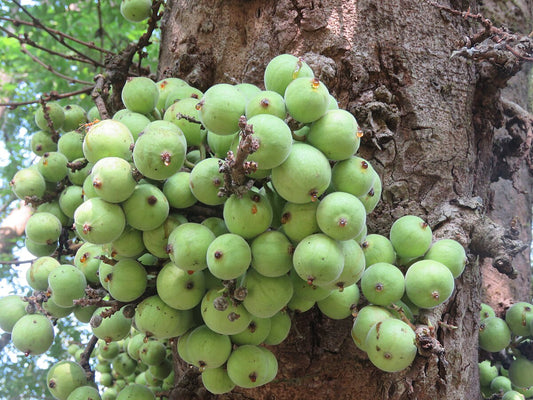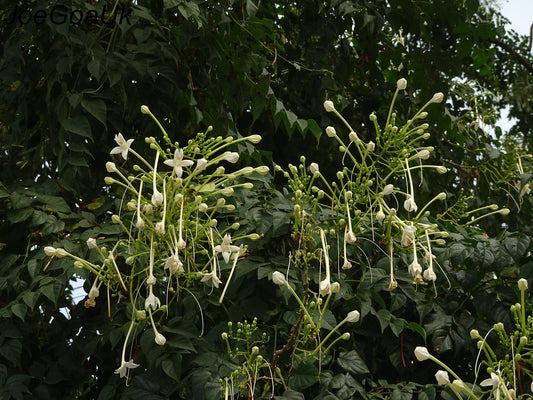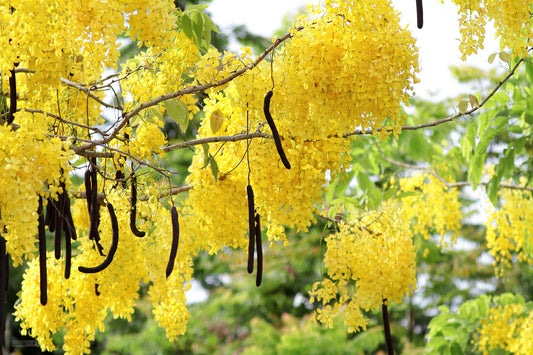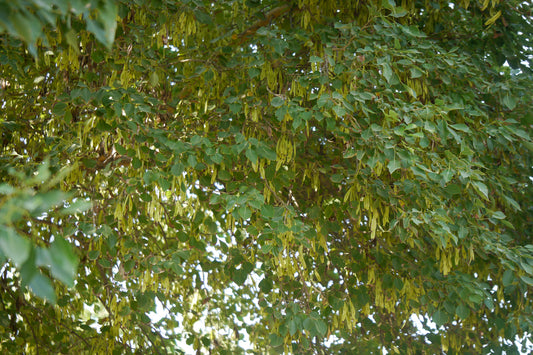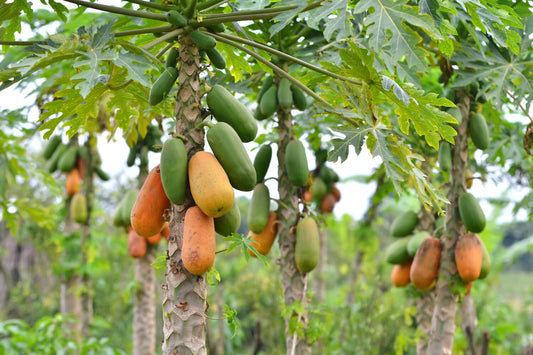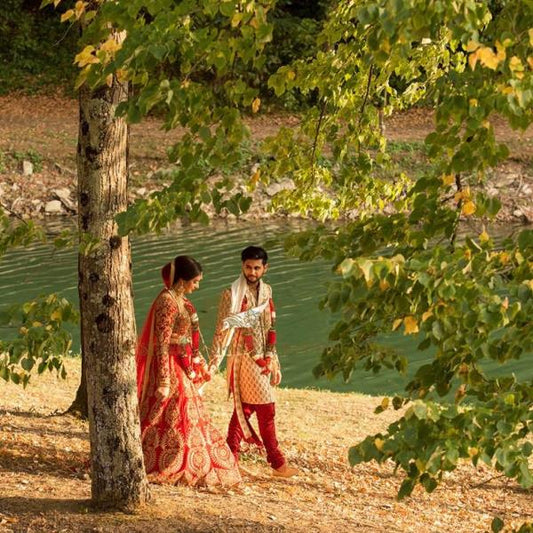

In the grandeur of the Himalayan landscapes, the Deodar Tree, scientifically known as Cedrus deodara, stands as a majestic evergreen guardian, gracing the mountains with its enduring presence. This iconic tree, recognized for its aromatic wood and towering stature, not only contributes t Read more
Trending
Trees for Corporates
Deodar Tree
You may also like
Corporate Plantations
Deodar Tree Facts
Explore interesting facts about the Deodar tree, renowned for its majestic stature, aromatic wood, and cultural significance. Learn about its botanical name (Cedrus deodara), native range in the Western Himalayas, and use in timber production and landscaping.
Deodar Tree Care
Discover essential care tips for growing and maintaining Deodar trees in gardens, parks, and forest plantations. From site selection and soil preparation to watering, fertilizing, and pruning, learn how to ensure the health and vigor of these iconic evergreen trees.
Deodar Tree Pruning
Learn about the importance of pruning Deodar trees to promote structural integrity, enhance aesthetics, and manage size and shape. Explore pruning techniques, timing, and safety precautions for maintaining healthy and beautiful Deodar specimens in urban and rural landscapes.
Deodar Tree Wood Uses
Explore the diverse uses of Deodar wood in construction, carpentry, and furniture making. Known for its durability, rot resistance, and attractive grain patterns, Deodar wood is prized for its versatility and aesthetic appeal in various woodworking applications.
Deodar Tree Medicinal Uses
Discover the medicinal properties of Deodar leaves, resin, and essential oils in traditional and Ayurvedic medicine. From treating respiratory disorders and skin conditions to promoting relaxation and mental clarity, Deodar has been valued for its therapeutic benefits for centuries.
Deodar Tree Symbolism
Explore the cultural symbolism of the Deodar tree in Hindu mythology, religious rituals, and artistic expression. Revered for its association with Lord Shiva, the Deodar tree symbolizes strength, purity, and spiritual enlightenment in Indian culture and traditions.
Deodar Tree Habitat
Delve into the natural habitat of Deodar trees, including montane forests and subalpine regions in the Himalayas. Learn about their ecological role in soil stabilization, watershed protection, and biodiversity conservation in high-altitude ecosystems.
Deodar Tree Conservation
Learn about conservation efforts aimed at protecting Deodar trees and their fragile mountain habitats from threats such as deforestation, illegal logging, and climate change. Discover initiatives focused on habitat restoration, community engagement, and sustainable forestry practices to ensure the long-term survival of these iconic trees.
Deodar Tree Flowering Season
Learn about the flowering season of Deodar trees and the factors influencing bloom timing and intensity. From environmental cues such as temperature and rainfall to tree age and health, various factors contribute to the spectacular floral displays of Deodar trees in spring.
Deodar Tree Growth Rate
Gain insights into the growth rate and development of Deodar trees under optimal growing conditions. With slow to moderate growth rates, Deodar trees can attain impressive heights and spread over several decades, providing shade, beauty, and timber resources in mountain landscapes.
Deodar Tree Invasive Potential
Explore the invasive potential of Deodar trees in non-native habitats and the ecological impacts of their introduction. While valued for their ornamental and timber qualities, Deodar trees can become invasive in certain regions, displacing native vegetation and altering ecosystem dynamics.
Deodar Tree Leaf Characteristics
Explore the distinctive characteristics of Deodar leaves, including their needle-like shape, blue-green color, and arrangement in whorls. With adaptations for reducing water loss and deterring herbivores, Deodar leaves are well-suited to cold and windy environments in mountainous regions.
Deodar Tree Root System
Learn about the root system of Deodar trees and its role in anchoring the tree, accessing water and nutrients, and stabilizing soil on steep slopes. With deep taproots and lateral spreading roots, Deodar trees are well-adapted to rocky, well-drained soils in mountain habitats.
Deodar Tree Drought Tolerance
Discover the drought tolerance mechanisms of Deodar trees and their ability to survive prolonged dry periods in mountain environments. With adaptations such as deep root systems, water storage tissues, and reduced transpiration rates, Deodar trees can withstand water stress and maintain growth and survival.
Deodar Tree Flower Anatomy
Explore the anatomy of Deodar flowers, including their pendulous clusters of male and female cones. With inconspicuous blooms and wind-pollination mechanisms, Deodar flowers produce abundant seeds for dispersal and regeneration in mountain forests.
Deodar Tree Soil Requirements
Learn about the soil requirements for growing Deodar trees and optimizing their health and growth in mountainous terrain. From well-drained, acidic soils to rocky substrates with good aeration and moisture retention, Deodar trees thrive in diverse soil types found in their native habitats.
Deodar Tree Pest and Disease Management
Discover common pests and diseases that affect Deodar trees and strategies for prevention and control. From fungal pathogens and bark beetles to caterpillars and root rot, proactive management practices can help minimize the impact of pests and diseases on tree health and productivity.
Deodar Tree Root Pruning
Learn about root pruning techniques for Deodar trees to address root-related issues and promote tree health and stability on steep slopes. From removing circling roots and surface roots to improving soil structure and erosion control, root pruning can enhance the vigor and longevity of Deodar trees in mountain landscapes.
Deodar Tree Landscape Design
Explore creative ideas for incorporating Deodar trees into landscape designs, parks, and botanical gardens. From specimen plantings and windbreaks to slope stabilization and wildlife habitat creation, Deodar trees offer aesthetic, ecological, and functional benefits in mountainous environments.
Deodar Tree Timber Industry
Learn about the role of Deodar trees in the timber industry and their economic importance in mountain communities. From harvesting and processing timber for construction and woodworking to exporting wood products for domestic and international markets, Deodar trees contribute to livelihoods and economic development in regions where they are cultivated.
FAQ
What is a Deodar tree?
The Deodar tree, also known as the Himalayan cedar, is a majestic coniferous tree native to the western Himalayas. Renowned for its graceful, drooping branches and aromatic wood, the Deodar tree is highly valued for its ornamental and timber qualities.
Where are Deodar trees commonly found?
Deodar trees are native to the western Himalayan region, including parts of India, Pakistan, and Afghanistan. They are commonly found in mountainous areas with cool, moist climates, often growing alongside other conifer species such as pine and spruce.
What are the characteristics of Deodar trees?
Deodar trees are characterized by their pyramidal shape, pendulous branchlets, and soft, needle-like leaves arranged in spirals. They produce large, cylindrical cones that contain winged seeds and are prized for their aromatic wood, which is resistant to decay and insect damage.
How tall do Deodar trees grow?
Deodar trees can grow to impressive heights, reaching up to 40-50 meters (130-160 feet) in optimal growing conditions. Their towering stature and graceful form make them prized specimens in parks, gardens, and arboretums.
What is the scientific name of the Deodar tree?
The scientific name of the Deodar tree is Cedrus deodara, belonging to the family Pinaceae. The species name "deodara" is derived from the Sanskrit words "deva" meaning divine and "daru" meaning wood, reflecting its sacred and revered status in Hindu culture.
When do Deodar trees bloom?
Deodar trees typically bloom in spring, producing small, inconspicuous flowers that are pollinated by wind. The male flowers are borne in clusters, while the female flowers develop into woody cones that take about 18 months to mature.
How to care for Deodar trees?
To care for Deodar trees, plant them in well-drained soil in a location with full sunlight or partial shade. Provide regular watering, especially during dry periods, and mulch around the base of the tree to conserve moisture and suppress weeds. Prune as needed to remove dead or diseased branches and maintain shape.
What are the benefits of planting Deodar trees?
Planting Deodar trees offers several benefits, including providing shade, enhancing landscape aesthetics, and improving air quality. Their dense foliage and deep root systems also help stabilize soil, prevent erosion, and provide habitat for wildlife.
Are Deodar trees suitable for urban environments?
Yes, Deodar trees are well-suited for urban environments due to their tolerance of pollution and adaptable nature. They are often planted as street trees, in parks, and along boulevards, where their graceful form and evergreen foliage add beauty and shade to urban landscapes.
How to propagate Deodar trees?
Deodar trees can be propagated from seeds or cuttings. Collect mature seeds from the cones and sow them in containers filled with well-draining potting mix. Alternatively, take semi-hardwood cuttings from healthy, mature trees and root them in a rooting hormone solution.
What are the common pests and diseases affecting Deodar trees?
Common pests affecting Deodar trees include aphids, scale insects, and spider mites, while diseases such as root rot, needle blight, and canker can also occur. Proper cultural practices, including regular watering, pruning, and sanitation, can help prevent and manage pest and disease problems.
Can Deodar trees tolerate drought?
Deodar trees have moderate drought tolerance once established but benefit from regular watering during dry periods, especially in hot summer months. Mulching around the base of the tree helps retain soil moisture and regulate soil temperature, promoting healthy growth.
How long does it take for a Deodar tree to mature?
It typically takes several decades for a Deodar tree to reach full maturity and attain its maximum height and girth. However, they are relatively fast-growing compared to other conifer species and can provide significant shade and beauty within a relatively short time frame.
Are Deodar trees deciduous?
No, Deodar trees are evergreen conifers, meaning they retain their needle-like leaves year-round. Their evergreen foliage provides color and texture to the landscape throughout the year, making them valuable ornamental trees in both residential and commercial settings.
Can Deodar trees be grown in pots?
Deodar trees can be grown in pots when they are young, but they require a large container with sufficient space for root development. Use a well-draining potting mix and provide regular watering and fertilization to support healthy growth. Transplant to a larger container or into the ground as the tree grows.
What is the significance of Deodar trees in landscaping?
Deodar trees are prized in landscaping for their graceful form, evergreen foliage, and aromatic wood. They are often used as specimen trees, focal points, or windbreaks in parks, estates, and large gardens, where their majestic presence adds beauty and charm to the surroundings.
Are Deodar trees invasive?
Deodar trees are not considered invasive in most regions, although they may escape cultivation and naturalize in favorable environments. Their relatively slow growth rate and limited seed dispersal mechanisms reduce the likelihood of widespread invasion, but caution should be exercised in regions with sensitive ecosystems.
How do you prune a Deodar tree?
Prune Deodar trees in late winter or early spring to remove dead or diseased branches, improve air circulation, and maintain shape. Use clean, sharp pruning tools and make cuts just outside the branch collar to promote rapid healing and minimize the risk of infection.
What is the lifespan of a Deodar tree?
The lifespan of a Deodar tree can vary depending on growing conditions, species, and management practices. In optimal conditions, Deodar trees can live for several centuries, with some specimens recorded to be over 500 years old. Providing proper care and maintenance can help prolong their lifespan and ensure their longevity in the landscape.
Are Deodar trees protected species?
Deodar trees are not listed as protected species in most regions, although they may be subject to conservation efforts in their native range. Sustainable forestry practices and habitat preservation initiatives help ensure the continued existence of Deodar trees and their ecological importance in mountain ecosystems.
Most Popular
Connect with us
-
👥 Corporates
If you are looking for:
- 🌲 Tree Plantation Events
- 📊 CSR Projects
📧 corporate@growbilliontrees.com
📞 +91 9699723523
💬 WhatsApp (Only): +91 9370599291
🕒 Mon - Sat | 10am - 7pm IST
-
🧩 Tree Plantation NGOs
If you are looking for:
- 💰 Financial Assistance
- 🤝 Operational Support
📧 support@growbilliontrees.com
📞 +91 9699723523
💬 WhatsApp (Only): +91 9370599291
🕒 Mon - Sat | 10am - 7pm IST
-
🌼 Individuals
If you are looking for:
- 👥 Group Tree Plantation Drive
- 🌳 Bulk Tree Plantation
📞 +91 9699723523
💬 WhatsApp (Only): +91 9370599291
🕒 Mon - Sat | 10am - 7pm IST



